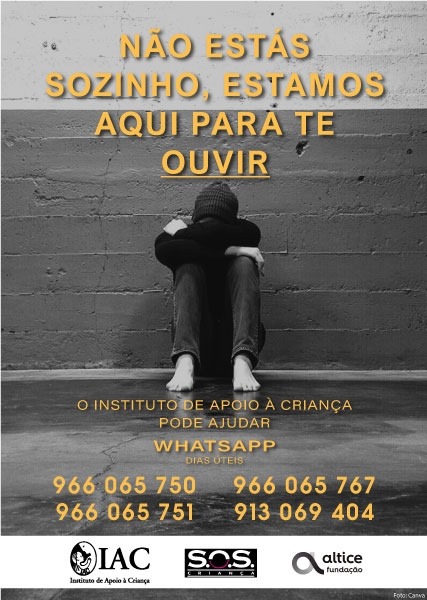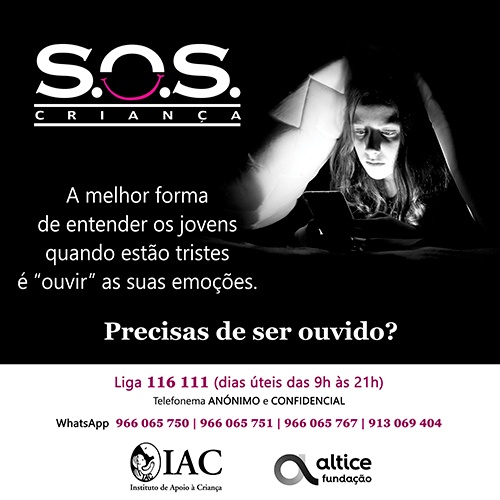6.ª Edição do concurso “Conta-nos uma história!” – Podcast na educação
Outubro 31, 2014 às 8:00 pm | Publicado em Divulgação | Deixe um comentárioEtiquetas: 1º Ciclo, Concurso Escolar, Direção-Geral da Educação (DGE), Educação, Educação Pré-Escolar, Gabinete da Rede Bibliotecas Escolares, Histórias, Plano Nacional de Leitura, Podcast
O Ministério da Educação e Ciência (MEC), através da Direção-Geral da Educação (DGE), do Gabinete da Rede de Bibliotecas Escolares (RBE) e do Plano Nacional de Leitura (PNL), em parceria com a Microsoft, lança a 6.ª Edição do concurso “Conta-nos uma história!” – Podcast na educação.
Esta iniciativa pretende fomentar a criação de projetos desenvolvidos pelas escolas de Educação Pré-Escolar e 1.º Ciclo do Ensino Básico que incentivem a utilização das Tecnologias de Informação e Comunicação (TIC), nomeadamente tecnologias de gravação digital de áudio e vídeo. O ato de contar histórias desempenha um papel extremamente relevante nas aprendizagens dos alunos destes níveis de educação e ensino, quer na aquisição de conhecimentos, competências e valores quer nas atividades de carácter mais lúdico. As histórias a admitir a concurso podem ser originais ou consistir em recontos com base em fábulas, parábolas, contos, mitos ou lendas e outros textos já existentes, podendo ser humorísticas, educativas, tradicionais, etc. Em todos os casos, devem conter um narrador e diferentes personagens, sendo obrigatória a existência de diálogos.
mais informações:
Halloween no Museu da Eletricidade
Outubro 31, 2014 às 2:02 pm | Publicado em Divulgação | Deixe um comentárioEtiquetas: Actividades para Crianças, Halloween, Museu da Eletricidade
Lisboa
Museu da Eletricidade
31 de outubro a partir das 21h30 Entrada livre (não requer marcação prévia)
No próximo 31 de outubro o Museu da Eletricidade veste-se a rigor para receber o Dia de Halloween.
A partir das 21h30 o Museu ganha vida e convida o visitante a entrar no jogo Cluedo, o chefe da Central Tejo foi assassinado. Quem o matou? E qual a arma do crime?
Zombies, fantasmas, bruxas, lobos e muitos sustos prometem uma noite de mistério verdadeiramente assustadora no Museu, para todas as idades!
Brincar a modelar na Rede BLX – PARA CRIANÇAS dos 4 aos 10 anos
Outubro 31, 2014 às 12:00 pm | Publicado em Divulgação | Deixe um comentárioEtiquetas: Actividades para Crianças, Bibliotecas Municipais de Lisboa, Criart - arte com plasticina, Plasticina
Brincar a modelar na Rede BLX
pela Criart – arte com plasticina
PARA CRIANÇAS dos 4 aos 10 anos Tens gosto em fazer trabalhos manuais? És criativo? E de brincar a aprender? Então junta a tua criatividade à diversão e vem aprender a modelar com plasticina. Descobre a magia que é modelar com as mão os teus trabalhos, com um material que salta e que seca ao ar. Datas, horários e bibliotecas:
BIBLIOTECA de BELÉM 1 novembro às 11H00 20 dezembro às 11H00
BIBLIOTECA dos CORUCHÉUS 22 novembro às 11H00
BIBLIOTECA ORLANDO RIBEIRO 22 novembro às 15H00 29 novembro às 15H00
BIBLIOTECA NATÁLIA CORREIRA 6 dezembro às 10H00
BIBLIOTECA MARIA KEIL 13 dezembro às 15H00
N.º máximo e mínimo de participantes: 5 crianças | 10 crianças +INFO e Inscrições: Mónica Pereira | E: criart.14@gmail.com | 965689165
Preço: 5€/criança
[2014-10-18]
Semanário gravidez e maternidade na adolescência
Outubro 31, 2014 às 10:41 am | Publicado em Divulgação | Deixe um comentárioEtiquetas: CIES-IUL, Estudo, Gravidez na Adolescência, Humanus Associação Humanidades, Maternidade Juvenil, Seminário
Entrada livre com inscrição obrigatória até 6 de novembro para humanidades@humanus.pt
Qualquer dúvida ou questão não hesite em contactar a Associação Humanidades via email humanidades@humanus.pt, telefone fixo 21 099 64 93 ou telemóvel 91 913 59 62
Projeto “QualifiCAM” – Estudo de Avaliação do Programa de Qualificação e Integração Profissional de Mães Adolescentes
http://www.humanus.pt/?p=5474&lang=en
Rastreio Gratuito de Dificuldades de Aprendizagem Específicas da Leitura – Dislexia, para crianças entre os 5 e os 12 anos
Outubro 31, 2014 às 6:00 am | Publicado em Divulgação | Deixe um comentárioEtiquetas: CADIN - Centro de Apoio ao Desenvolvimento Infantil, Dificuldades de Aprendizagem Específicas, Dislexia, Rastreio
RASTREIO DE DISLEXIA
No próximo dia 13 de novembro, a equipa do CADIn irá realizar um rastreio gratuito de Dificuldades de Aprendizagem Específicas da Leitura – Dislexia, para crianças entre os 5 e os 12 anos.
É indicado trazer o seu filho/a para fazer rastreio de dislexia no CADIn, se:
· Lê mal, com erros e muito devagar
· Teve dificuldade em aprender as letras
· Evita ler
· As suas notas não correspondem ao esforço que faz para aprender e àquilo que sabe
· Tenta adivinhar as palavras quando lê
· Leva tanto tempo a ler uma frase, que no final já não sabe o que leu
· Não compreende o que lê
· Existem familiares com diagnóstico de dislexiaMais informações:http://www.cadin.net/destaque/rastreio-gratuito-de-dislexia/
Ebook “Viagem por terras da(s) parentalidade(s)
Outubro 30, 2014 às 8:00 pm | Publicado em Livros, Recursos educativos | Deixe um comentárioEtiquetas: Ana Teixeira de Melo, E-Book, Livro Digital, Parentalidade, Recursos Educativos Digitais
descarregar o e-book aqui
Pais “insensíveis”, filhos mais expostos a maus conteúdos
Outubro 30, 2014 às 1:00 pm | Publicado em Estudos sobre a Criança | Deixe um comentárioEtiquetas: A criança e os media, Adolescentes, Artigo, Crianças, Daniel Romer, Estudo, Filmes, Patrick E. Jamieson, Pediatrics, Relação Pais-Filhos, Sexo, Violência na Televisão
Texto da Pais & Filhos de 27 de outubro de 2014.
O estudo citado na notícia é o seguinte:
Parental Desensitization to Violence and Sex in Movies
À medida que os adultos ficam cada vez menos afetados por conteúdos audiovisuais “pesados” – como, por exemplo, cenas de violência e sexo no cinema e na televisão – mais riscos correm as crianças de serem expostas a este tipo de materiais, sem qualquer filtro.
Um trabalho realizado pela Universidade da Pensilvânia (EUA) expôs mil adultos, com filhos entre os seis e os 17 anos, a conteúdos audiovisuais deste tipo, com cenas crescentemente chocantes. Os resultados mostram que pais e mães mostraram-se cada vez menos incomodados, à medida que o tempo passava, e também mais permeáveis a deixar os filhos assistirem às imagens perturbadoras.
“Esta rápida mudança de atitude foi surpreendente”, admitiu o líder da investigação, Daniel Romer. “Assistimos a uma ‘dessensibilização’ adulta impressionante”, acrescentou durante uma entrevista dada ao jornal “Pediatrics”. O mesmo especialista diz suspeitar que os crescentes níveis de violência a que se assiste nos filmes para menores de 12 anos têm também este fenómeno na sua base. “As pessoas que classificam as películas podem também estar já a sofrer desta mesma ‘dessensibilização’”, afirmou.
Daniel Romer recorda que a exposição de crianças, em especial antes da adolescência, a conteúdos violentos e sexuais pode ter efeitos no comportamento dos mais novos. Mas reconhece que ainda não é claro se esses efeitos são diferentes conforme o tipo de cenas. “Não é claro se ver um robô a ser destruído ou uma pessoa a ser atingida por um tiro é processado pela criança do mesmo modo. O melhor mesmo será os pais avaliarem bem a que tipo de mensagem querem que as suas crianças fiquem expostas mesmo que, pessoalmente, nem pestanejem perante as imagens”, conclui.
Entries e comentários feeds.
















